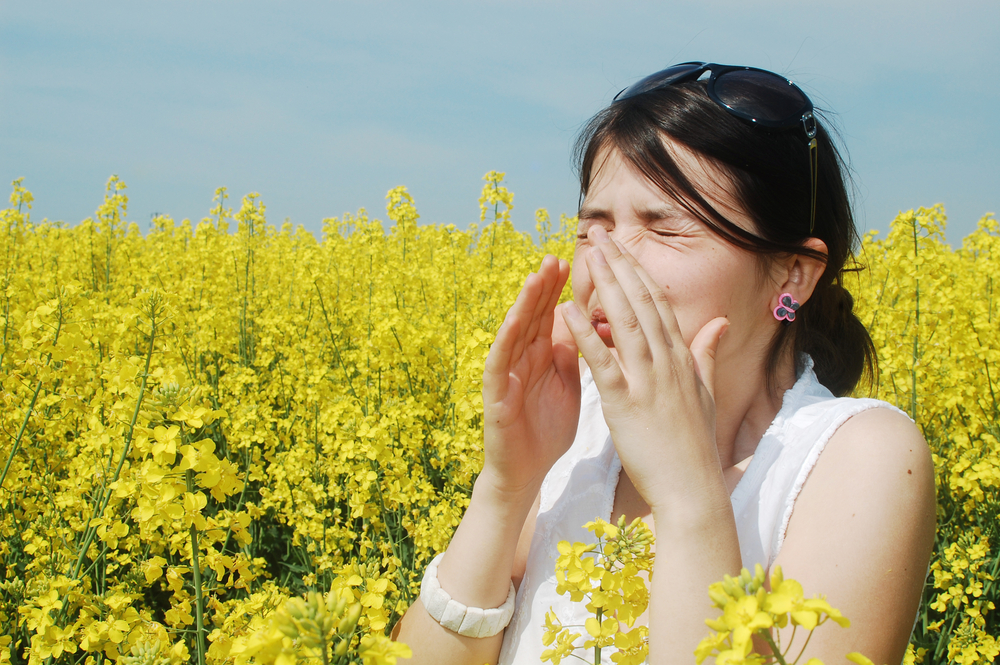ALLERGIC RHINITIS

Allergy is the body’s reaction to foreign objects more than normal. The nose is one of the organs where allergic complaints arise. Allergic rhinitis may cause symptoms such as watery runny nose, stuffy nose, sneezing, itching in the eyes, nose and palate. Mild bruises can be seen under the eyes of people with allergies.
Substances that cause an allergic reaction are called allergens. There are 4 different groups of allergens: Seasonal, perennial, occupational and food.
1. Seasonal allergies (hay fever)
Allergic reactions and symptoms occur seasonally. Tree pollen causes symptoms in the spring, grass in the summer, and weeds in the fall.
2. Perennial allergy
They cause allergic reactions all year round.
Molds: Molds live in indoor ornamental plants and their potting soil. They are found in dark and damp places such as basements and laundry rooms, as well as in cheese and fermented beverages.
Dust mites: An allergic reaction may develop against the secretion and feces of the animal called mite. Essentially, the proteins excreted in the feces of the mites are allergenic. A temperature of 15-20 degrees and a humidity of 60-70% are suitable for mites to live in. Mites are found in carpets, curtains, pillows, blankets, sofas, and bathrooms.
Cockroach
Pet dander (such as cat, dog, horse, etc.): animal saliva proteins dry on their fur and become an allergen by scattering in the air.
3. Occupational allergy:
Wood dust is an example of occupational allergens for carpenters, rats and mice for those working in the laboratory; latex and powder in plastic gloves for healthcare workers.
4. Food allergy
The allergic reaction starts immediately after the relevant food intake. Examples of these foods are; cheese, eggs, poorly preserved fish, soybean, some wines, aspirin, beans, kiwi, strawberries, hazelnuts, wheat and tomatoes.
How is allergic rhinitis diagnosed?
If the cause of the rhinitis is thought to be allergic, blood or skin tests should be performed in these patients, and the presence of allergy should be investigated, and if there is, it should be determined what they are against.
Treatment of The allergic rhinitis
The ideal treatment is to avoid the allergen causing the complaints. But this is always not very practical. Therefore, immunization to the allergen or medical treatment is inevitable. Antihistamines, nasal decongestants, mast cell stabilizers and corticosteroids are used in medical treatment.
Immunization is the most effective treatment for allergies and has a high level of success. The aim of this treatment is to reduce the sensitivity to the substance that causes the allergic reaction. Vaccines are administered regularly for 3-5 years.
Avoidance of allergen
Avoidance of the allergen is part of the treatment, although it is not always very practical. We can list the measures that can be taken as follows:
• Using air conditioners or air cleaners in homes
• Frequent replacement of air conditioner filters
• Humidification of the dry air in winter (it should not be forgotten that molds can grow on humidifiers!)
• Wearing a protective mask while cleaning the house or dealing with weeds
• Use of acaricide detergents and HEPA filtered vacuum cleaners in carpet and furniture cleaning
• Keeping doors and windows closed during pollen seasons
• Not going out as much as possible during pollen seasons.
• Not keeping live plants in the house, especially in the bedrooms, for mold allergy
• Using a dehumidifier in humid rooms
• Avoiding feeding the allergic animal and being in the same environment
• Replacing woolen clothes and blankets and feather pillow with non-allergenic cotton or synthetic materials
• Covering pillows, mattresses and quilts with synthetic covers
